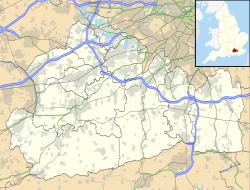| Caterham Barracks | |
|---|---|
| Caterham | |
 The officers' mess at Caterham Barracks | |
| Site information | |
| Type | Barracks |
| Owner | Ministry of Defence |
| Operator | |
| Location | |
| Coordinates | 51°17′20″N0°06′08″W / 51.288889°N 0.102222°W |
| Site history | |
| Built | 1877 |
| Built for | War Office |
| In use | 1877-1995 |
Caterham Barracks was a military installation in Caterham, Surrey.
